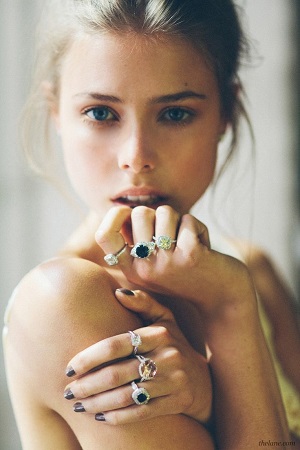De Beers may have arrived at the party a little late, but nonetheless new research that it published in its latest Diamond Insight Report provides detailed evidence about the rapidly changing role of women as diamond jewelry buyers. The research talks about “shifting relationship dynamics, women’s expanding roles in society and changing perceptions of femininity” which are creating “new motivations for diamond jewelry acquisitions“.
The language might sound somewhat high level, but the bottom line is that women have, for some years, been buying their own jewelry rather than waiting for a man to acquire it for them – and that trend is continuing apace.
Women accounted for around 25 percent of all diamond purchases in 2016, or around $20 billion of purchases in the four main markets of the US, China, Japan and India, according to the De Beers report. In the US and Japan, it is largely married women who are buying diamonds for themselves, whereas in the greater China region it’s single and mature women who are the main buyers. There is one common feature among the self buying females from these three markets, however, and that is that they are, for the most part, aged over 35, De Beers said.
The percentage of women who buy diamonds for themselves is particularly high in Hong Kong – at 55 percent – as the city has a high non-marriage rate. “Hong Kong women are more economically independent than men,” said Tang Xiaotang, founder of luxury retail consultancy Nofashion. “The reason for women to shop for diamonds has changed,” he said. “Now it is more like ‘I love myself’ rather than ‘a man loves me’.” More than half of all diamonds sold in Hong Kong last year were bought by women for themselves, the highest proportion among the top four diamond markets, according to the study by De Beers.
 When it comes to buying motivations, Chinese women are more easily influenced by their emotions, with celebration of relationships and personal milestones topping the list of reasons behind their self purchases, while Japanese women buy more on impulse, the study found. Meanwhile, De Beers Group CEO Bruce Cleaver comments: “As marriage comes later, women are buying or receiving diamonds for other occasions before marriage.”
When it comes to buying motivations, Chinese women are more easily influenced by their emotions, with celebration of relationships and personal milestones topping the list of reasons behind their self purchases, while Japanese women buy more on impulse, the study found. Meanwhile, De Beers Group CEO Bruce Cleaver comments: “As marriage comes later, women are buying or receiving diamonds for other occasions before marriage.”
The Diamond Insight Report 2017 highlights the emergence of three key trends that De Beers has identified as having a direct impact on how and why people buy diamond jewelry:
1. Changes to family and personal relationships are leading to diamond jewelry being purchased and given to symbolize a wider range of ‘moments’ in a life beyond those directly connected to relationship milestones. As marriage generally comes later in life, and as it is seen as a union between two equal individuals, women are receiving diamonds for multiple occasions both before and after marriage. Alongside traditional relationship milestones, diamond jewelry is increasingly being bought to celebrate occasions such as a new job, a promotion and personal achievements more broadly.

